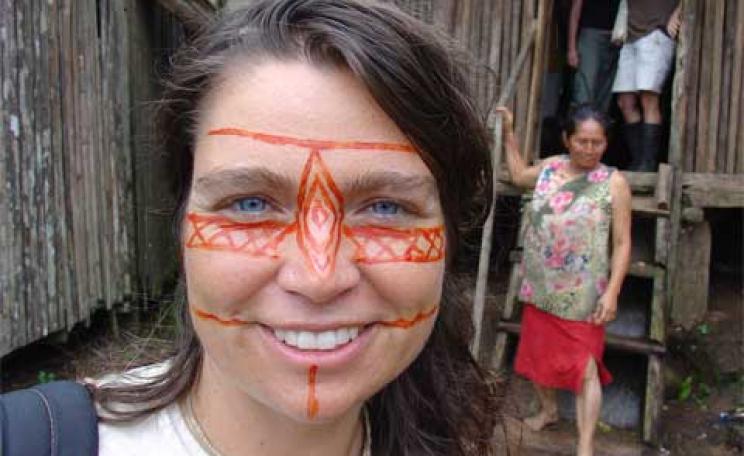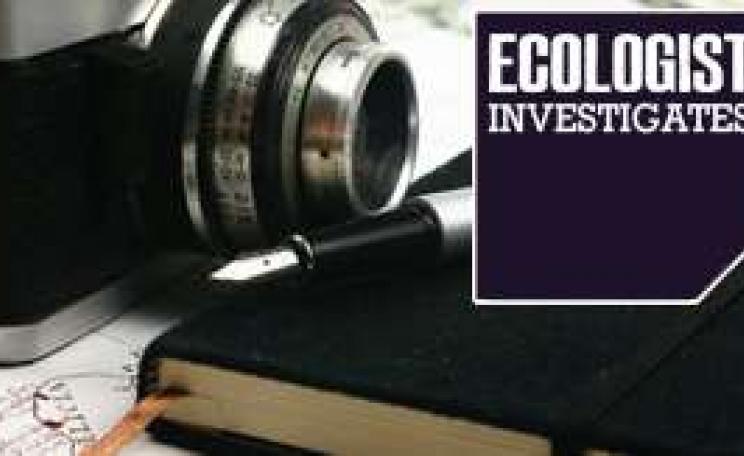In 1999 I first travelled to the Ecuadorean Amazon on behalf of an Australian environmental organisation called The Rainforest Information Centre.
I was to spend 6 months living deep in the jungle filming the threatened pink river dolphins, which swam through the trees and lived in the Panacocha lagoon.
Oil has been found under the lagoon, and we had been doing everything we could to create a management plan to protect this incredible area.
On the other side of the Napo River from where our base was is the renowned Yasuni National Park, named the most bio diverse place on Earth by 50 top scientists. Where the mountainous Andes meet the Amazon, this equatorial Noah’s Arc protects thousands of species. Over 500 different varieties of bird can be found in just four square miles.
Yasuni is also home to the Tagaeri and Taromenani, two tribes that have refused any contact with the outside world.
This jewel of our planet has been given many titles, including being named a UNESCO World Biosphere Reserve. You would think that being a National Park, Yasuni would be fully protected from all mining interests, but unfortunately this is not the case. Active wells have already sprung up within the parks borders.
Last year, the Ecuadorean Government and the United Nations Development Program launched the Yasuni Ishpingo-Tambococha-Tiputini initiative, as an attempt to keep the oil in the ground. Ishpingo, Tambococha and Tiputini are the three proposed new drill sites within Yasuni. The government has agreed to leave the oil untouched, but only if the world comes to Ecuador’s assistance financially. This would involve $3.5 billion needing to be found to fully protect Yasuni.
On the border with Columbia lies the oil town of Lago Agrio. Once surrounded by pristine jungle and numerous indigenous communities, it is now a large town containing the worst poverty in Ecuador.
The original inhabitants of this area are losing both land and culture, with some groups being wiped out altogether.
Lago Agrio means bitter lake, renamed from Nueva Loja by the areas first oil workers after Texaco’s US headquarters. And what Texaco left behind is certainly bitter. After dumping toxic waste directly into rivers, they were ordered to stop and instead built holding pits, of which over 1,000 still remain. They are unlined, meaning they overflow when it rains, and when it’s dry they seep toxic waste down into the ground and contaminate the water.
Amazingly this information is not widely available, so I decided to take a trip from Ecuador down the Amazon to Brazil, in order to research the effects of the oil industry on the land and its people.
The documentary Blood of the Amazon was born from this trip, researching the solutions as well as the problems, and giving the people a voice.
Travelling in boats from village to village and sleeping on the banks of the Amazon, I interviewed oil industry workers, missionaries, lawyers and teachers as well as many of the affected people themselves.
Realising that I had also been a part of the problem, having driven and flown around Brazil and Ecuador, I also had to become a part of the solution.
I founded the Amazon Mycorenewal Project to bring mycoremediation to the area, which is the use of mushrooms to clean up oil spills. The project also built rainwater systems for the people who needed them.
Blood of the Amazon was also made in Spanish and a copy given to every affected village.
Oil is not just a climate change issue. It is also a humanitarian issue and it is high time we knew the truth about how and where oil is extracted, and the price that is paid before it reaches the pump.
Nicola Peel is an environmental activist and documentary filmmaker. Blood of the Amazon is available for donations of £10 or more from the Eyes of Gaia website.
Blood of the Amazon is also showing soon at the following cinemas:
15 August 2012 - Sedgwick Park, Horsham, West Sussex
20 August 2012 - Broadway Cinema, Nottingham




